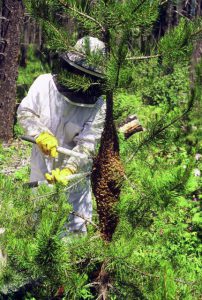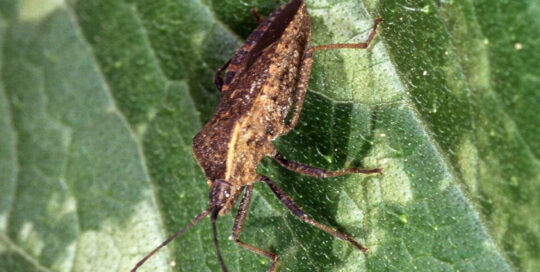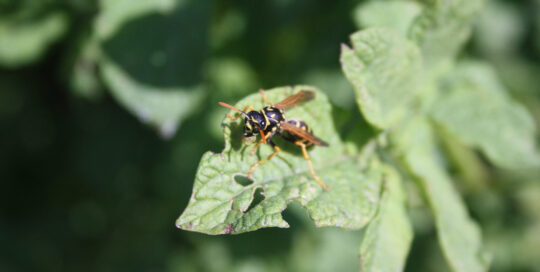What to do if you have a honeybee swarm
Views: 4206

There is rarely a sight more fascinating – or terrifying – than seeing a honeybee swarm fly past, especially if it’s your own. That’s what happened yesterday. Even though Grant checked the bees in the morning, and didn’t notice any indications that they were going to bug out, a small nuc decided to find a home elsewhere. We followed them down the road as far as we could and simply had to wave goodbye as they drifted out of sight.
This is swarm season. Bees decide to up and leave if a queen isn’t producing well, if they feel too crowded, or for reasons unknown. Many times it can be prevented by frequently checking the hives to see if they are drawing out queen cells or actively have them in place since what typically happens is the colony will create a new queen who will take half the hive and leave. In that case, the beekeeper needs to destroy the new queen cells, or move them to a new hive to create a new colony. And if the hive seems crowded with lots of brood and honey production, it might be as simple as setting a honey super on top to give them the perception of plenty of space. But sometimes, like yesterday, there is little warning at all, and they simply leave.
Where a hive goes is always a puzzle. You commonly spot them in trees, but sometimes they choose odd places, such as within a wheel well on a vehicle. The good news is swarms are typically very docile. While it might be absolutely terrifying to see a cloud of honeybees, they are focused on matters other than you, plus they have no hive to defend.
Removing a swarm
If you have a swarm in a tree, the best thing to do is to call a beekeeper. There are plenty of local Facebook groups with beekeepers that will be more than happy to help. But if you can’t find someone through social media, contact your local Extension office, or call someone at the Department of Agricultural for your state. Montana actually has a list of beekeepers who are ready and able to catch swarms, and I’m sure other states do the same.
Actually catching the swarm can be the tricky part. It might be as simple as snipping off a branch and shaking them into a new hive body, or it could involve renting a cherry picker to reach high enough into the tree. As long as the beekeeper catches the queen, the workers will be content to stay with her. It’s a win-win since the homeowner has the bees removed before they decide to take up permanent residence in their home (which does happen if they can find a suitable spot), and the beekeeper has a new colony. And with the state of honeybees these days, every colony we can save is a good thing.
If you see a swarm don’t panic. Take a moment to enjoy them floating past. And if you have a cluster in a tree, bush, or somewhere you don’t want them, give a beekeeper a call to make everyone happy.
Meet Amy Grisak
Amy is a freelance author and photographer in Great Falls, MT who specializes in gardening, foods, and sustainable agriculture. She provides information on every kind…
Amy's Recent Posts

Squish Squash Bugs Before They’re a Problem








